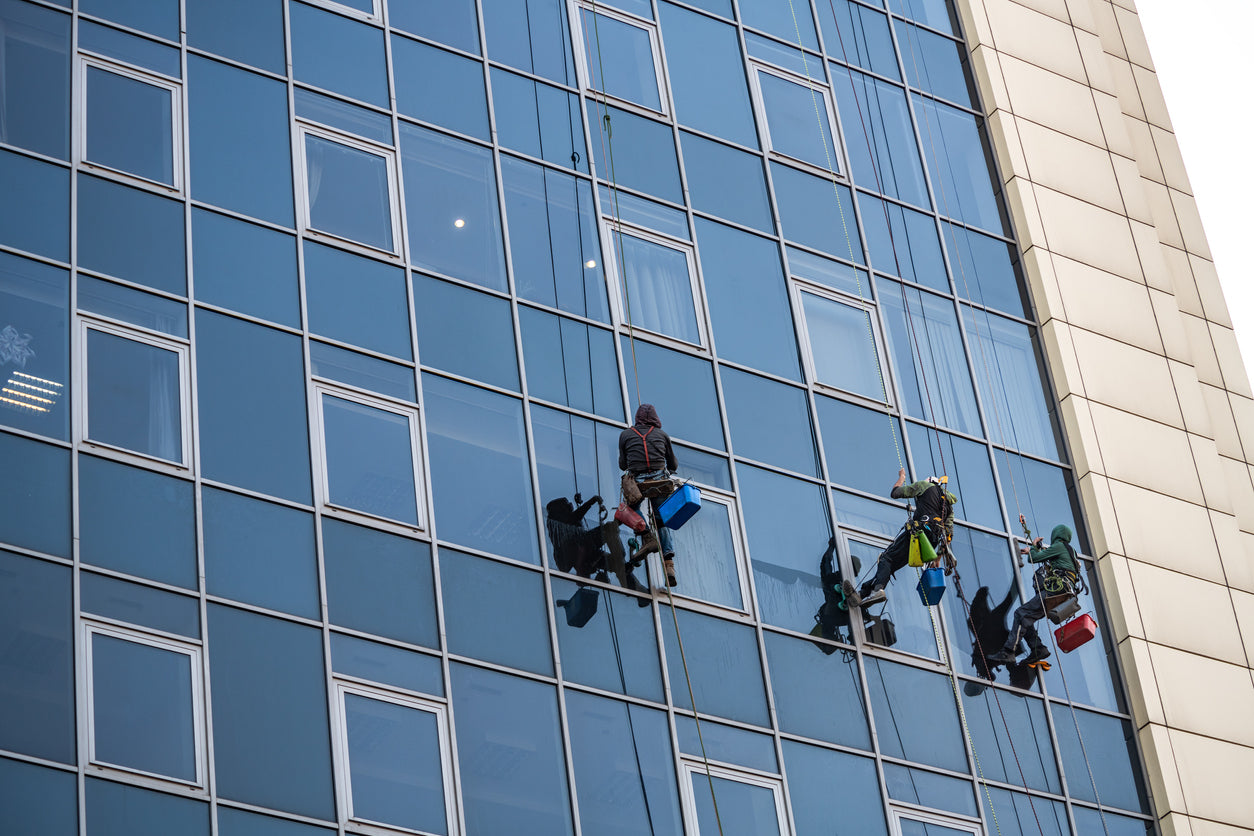Introduction
Window washing is a challenging and hazardous profession that often involves working at great heights. To ensure the safety and well-being of window washers, stringent fall protection requirements are in place. These regulations aim to mitigate the risk of falls and injuries while performing tasks at elevated levels.
I. Overview of Window Washing Fall Hazards
A. Height-Related Risks - Window washers frequently work at significant heights, often on skyscrapers or tall buildings, where the risk of falls is substantial. - Factors such as unstable working platforms, slippery surfaces, and adverse weather conditions further contribute to the fall hazards faced by window washers.
B. Potential Consequences - Falls from height can result in severe injuries or fatalities, including broken bones, head trauma, spinal cord injuries, and death. - In addition to physical harm, falls can also lead to financial losses, legal liabilities, and reputational damage for employers and building owners.
II. Fall Protection Regulations and Standards
A. Occupational Safety and Health Administration (OSHA) Requirements - OSHA sets forth regulations and standards to protect workers from fall hazards in the workplace, including those specific to window washing. - OSHA's fall protection standards require employers to provide appropriate fall protection systems, equipment, and training to workers exposed to fall hazards.
B. ANSI/IWCA I-14 Window Cleaning Safety Standard - The ANSI/IWCA I-14 Window Cleaning Safety Standard establishes guidelines and best practices for safe window cleaning operations. - The standard addresses various aspects of window washing safety, including fall protection, equipment maintenance, training requirements, and emergency procedures.
III. Fall Protection Measures for Window Washers
A. Guardrails and Safety Nets - Guardrails and safety nets are primary forms of passive fall protection that create physical barriers to prevent falls from elevated work areas. - Guardrails should be installed along the edges of rooftops, platforms, and open-sided floors to provide continuous protection for window washers.
B. Personal Fall Arrest Systems (PFAS) - Personal fall arrest systems consist of a full-body harness, lanyard, and anchorage point and are designed to arrest the fall of a worker in the event of a fall. - Window washers must wear PFAS when working at heights without adequate guardrails or where other fall protection measures are impractical.
C. Rope Descent Systems (RDS) - Rope descent systems are commonly used in window washing to lower workers from the roof or upper floors of a building to the windows being cleaned. - RDS must be properly designed, installed, and maintained to ensure the safety of window washers during descent and ascent.
IV. Training and Certification Requirements
A. Comprehensive Training Programs - Window washers must undergo thorough training on fall protection systems, equipment usage, emergency procedures, and safe work practices. - Training should be provided by qualified instructors and include both classroom instruction and hands-on practical exercises.
B. Certification and Recertification - Window washers may be required to obtain certification or licensing from relevant authorities to demonstrate competency in their field. - Certifications typically require periodic renewal through continuing education and skills assessment to ensure ongoing compliance with safety standards.
V. Employer Responsibilities and Best Practices
A. Hazard Assessments and Mitigation - Employers are responsible for conducting regular hazard assessments to identify fall hazards in the workplace and implement appropriate controls. - Mitigation measures may include engineering controls, administrative controls, and personal protective equipment (PPE) to minimize the risk of falls.
B. Equipment Inspection and Maintenance - Employers must ensure that fall protection equipment, including guardrails, safety nets, PFAS, and RDS, is inspected, maintained, and replaced as needed. - Regular inspections help identify defects or damage that could compromise the effectiveness of fall protection systems.
VI. Conclusion
Fall protection is paramount for window washers who perform tasks at elevated heights. By adhering to stringent regulations, implementing appropriate fall protection measures, and providing comprehensive training, employers can mitigate the risk of falls and ensure the safety and well-being of window washers. By prioritizing fall protection, employers demonstrate their commitment to workplace safety and uphold their legal and moral obligations to protect workers from harm.
FAQs
1. Are there specific OSHA regulations that apply to window washing fall protection? Yes, OSHA's fall protection standards, found in 29 CFR Part 1910 Subpart D and 29 CFR Part 1926 Subpart M, establish requirements for fall protection in various industries, including window washing. These standards outline specific regulations for guardrail systems, personal fall arrest systems, and other fall protection measures.
2. What is the role of building owners in ensuring fall protection for window washers? Building owners have a legal responsibility to provide a safe work environment for window washers and other maintenance workers. This includes ensuring that adequate fall protection systems are in place, conducting regular inspections of building facades and equipment, and complying with relevant safety regulations and standards.
3. Can window washers refuse to work if they feel unsafe due to inadequate fall protection? Yes, window washers have the right to refuse unsafe work under OSHA's General Duty Clause, which requires employers to provide a workplace free from recognized hazards that are likely to cause serious harm or death. If window washers believe that inadequate fall protection puts them at risk, they should notify their employer and refuse to perform the work until safety concerns are addressed.
4. Are there specific training requirements for workers who use rope descent systems (RDS) for window washing? Yes, workers who use rope descent systems (RDS) must undergo specialized training on RDS usage, safety procedures, and emergency rescue techniques. This training should be provided by qualified instructors and cover topics such as equipment inspection, proper rigging, and emergency response protocols.
5. How often should fall protection equipment be inspected and maintained? Fall protection equipment should be inspected and maintained regularly, following manufacturer guidelines and industry best practices. The frequency of inspections may vary depending on factors such as equipment usage, environmental conditions, and regulatory requirements. Generally, equipment should be inspected before each use, as well as at regular intervals determined by a formal inspection schedule.

